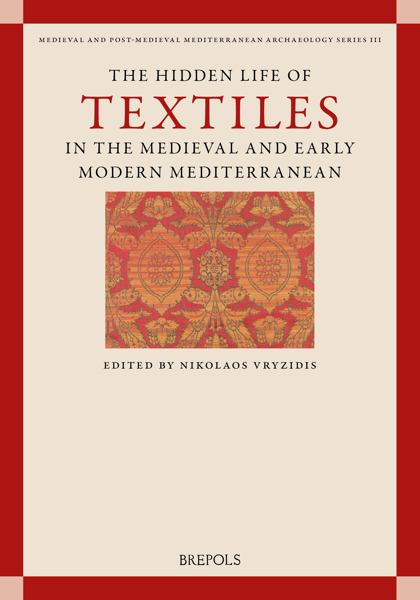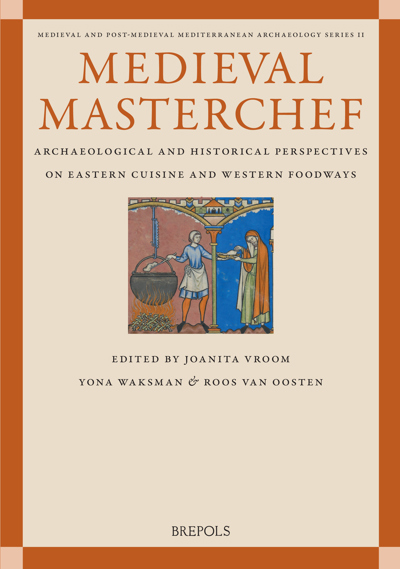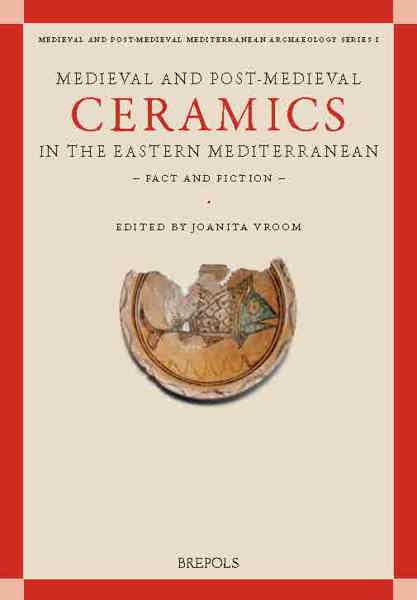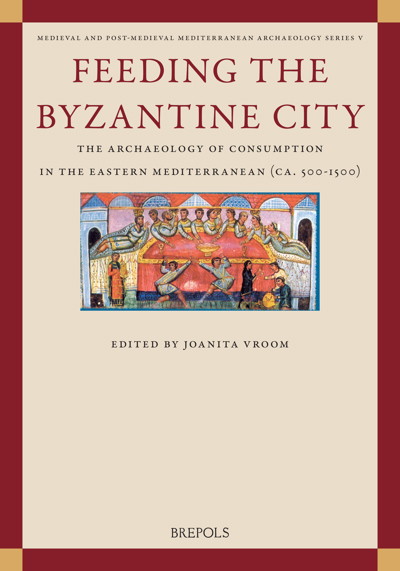
The Hidden Life of Textiles in the Medieval and Early Modern Mediterranean
Contexts and Cross-Cultural Encounters in the Islamic, Latinate and Eastern Christian Worlds
Nikolaos Vryzidis (ed)
- Pages: 304 p.
- Size:178 x 254 mm
- Illustrations:10 b/w, 105 col.
- Language(s):English, French
- Publication Year:2020
- € 75,00 EXCL. VAT RETAIL PRICE
- ISBN: 978-2-503-58773-8
- Paperback
- Available
- € 75,00 EXCL. VAT RETAIL PRICE
- ISBN: 978-2-503-58774-5
- E-book
- Available
"The ten chapters cover a chronological range from the 8th century to the 18th, and their geographic scope stretches well beyond the Mediterranean of the title. (...) The volume achieves a remarkable level of coherence, despite the wide range of the contributions." (Warren T. Woodfin, in: HALI Book Review, Winter 2020 / Issue 206, p. 114-116)
"Overall, this well-edited volume, loaded with original perspectives and unpublished material, is one of the best publications on textiles we have seen recently, a field which Byzantinists ought to pay more attention to." (Paschalis Androudis, in: Byzantina. Annual review of the Centre for Byzantine Research, Aristotle University of Thessaloniki, 37 [2019/20], p. 350-353)
"Einmal mehr wird dadurch deutlich, dass die Erforschung von Textilien ein besonders reichhaltiges und ertragreiches Feld für die interdisziplinäre und interkulturelle Mittelalter- und Frühneuzeitforschung darstellt. Farbabbildungen von hoher Qualität verleihen der Lektüre des Sammelbandes zusätzliche Anschaulichkeit." (Thomas Ertl, in The Medieval Review 22.01.08)
« ... l’ensemble de ces articles met nettement en évidence la richesse d’une approche qui prend en compte des sources variées, tant les différences entre textes, images et oeuvres conservées sont souvent fortes. » (Mélisande Bizoirre, dans Bulletin critique des Annales islamologiques 36, 2022, p. 130-134; URL : http://journals.openedition.org/bcai/1212 ; DOI : https://doi.org/10.4000/bcai.1212)
“This fascinating volume arose from a 2016 workshop on “cross-cultural interaction and social practice in relation to textiles” held at the Benaki Museum of Islamic Art in Athens (…) The particular joy of this book is its revelation of many little-known or unpublished textiles, including an eighth-to-ninth-century saddle cover of patterned silk, and a square Chinese embroidery of an egret repurposed as a rhomboid-shaped appendage to Greek ecclesiastical regalia and understood as a pelican. Other highlights include an account of a brocaded, embroidered textile so heavy the mule that carried it could bear nothing else, and the number of early modern Greek female embroiderers who signed their work.” (Gale R. Owen-Crocker, in Medieval Clothing & Textiles, 2023, p. 184-185)
Nikolaos Vryzidis received his PhD from SOAS, University of London, with a thesis on Greek clerical costume of the Ottoman period. He has published on the subject in journals like Byzantine and Modern Greek Studies, Convivium, Iran, JOTSA and Orientalia Christiana Periodica. His research interests are centred on material culture of religion, cross-cultural encounters in the Medieval Mediterranean, and Byzantine-Islamic interchange.
The book contains published papers of the conference 'Textiles & Identity in the Medieval and Early Modern Mediterranean: Paradigms of Contexts and Cross-Cultural Exchanges' of the British School at Athens held at the (Benaki) Museum of Islamic Art in 2016, as well as some new contributions.
The focus in this wide-ranging collection of studies by key scholars in the field is on textiles and their functions in various Mediterranean contexts (and beyond) during medieval and post-medieval times (ca. 10th-19th c.). The scope of the contributions encompasses archaeological, anthropological and art historical perspectives on a great variety of subjects, such as textiles from the Byzantine Empire and the Medieval Islamic World (e.g. Spain, Mamluk Egypt, Seljuk Anatolia), as well as the production and use of textiles in Italy, the Ottoman Empire, Armenia and Ethiopia. The volume offers a state-of-the-art of an often still hardly known area of study of textiles as historical and cultural sources of information, which makes it essential reading for scholars and a larger audience alike.
The book includes contributions by Laura Rodríguez Peinado, Ana Cabrera-Lafuente, Avinoam Shalem, Scott Redford, Maria Sardi, Vera-Simone Schulz, Nikolaos Vryzidis, Marielle Martiniani-Reber, Elena Papastavrou, Jacopo Gnisci and Dickran Kouymjian.
Laura Rodríguez Peinado (Complutense University of Madrid) & Ana Cabrera-Lafuente (Museo del Traje, Madrid), New approaches in Mediterranean textile studies: Andalusí textiles as case study
Avinoam Shalem (Columbia University), Metaphors we dress with: Medieval poetics about textiles
Scott Redford (SOAS, University of London), Flags of the Seljuk sultanate of Anatolia: Visual and textual evidence
Maria Sardi (Independent scholar), Foreign influences in Mamluk textiles: The formation of a new aesthetic
Vera-Simone Schulz (Kunsthistorisches Institut in Florenz), Entangled identities: Textiles and the art and architecture of the Apennine peninsula in a trans-Mediterranean perspective
Nikolaos Vryzidis (Aristotle University of Thessaloniki), Animal motifs on Asian textiles used by the Greek Church: A case study of Christian acculturation. Appendix by Dimitris Loupis: Woven Islamic inscriptions
Marielle Martiniani-Reber (Musée d'art et d'histoire, Geneva), Quelques aspects des relations entre productions textiles byzantine et arabe aux Xe-XIe siècles
Elena Papastavrou (Hellenic Ministry of Culture), Osmosis in Ottoman Constantinople: The iconography of Greek church embroidery
Jacopo Gnisci (Oxford University), Ecclesiastic dress in Medieval Ethiopia: Preliminary remarks on the visual evidence
Dickran Kouymjian (California State University, Fresno), Armenian altar curtains: Repository of tradition and artistic innovation
Nikolaos Vryzidis, Concluding remarks: Textiles as units of transmission




